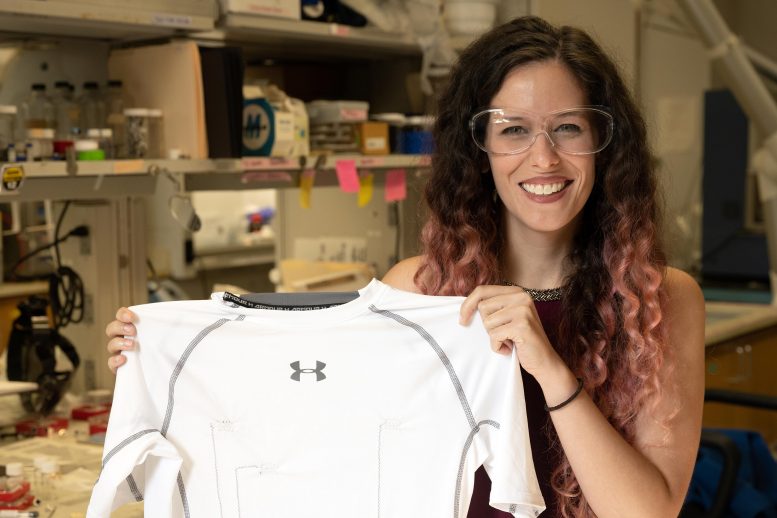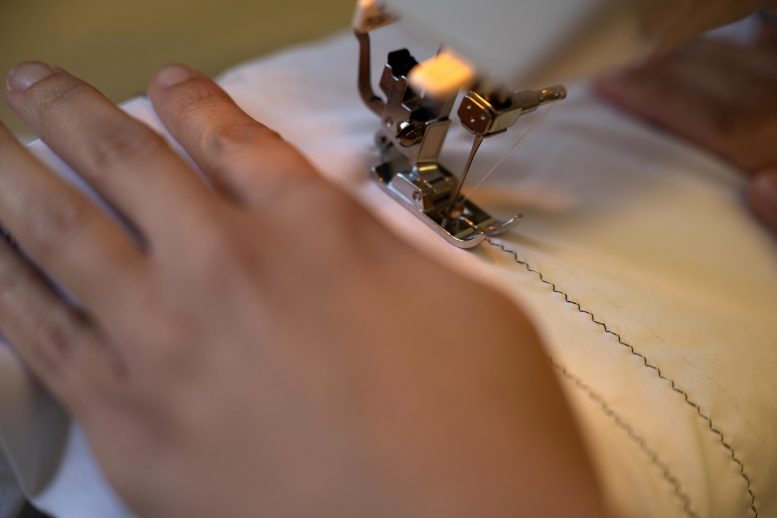
No need to wear uncomfortable smartwatches or chest straps to monitor your heart rate if your comfortable shirt can do the job better. This is the idea driving the “smart clothing” developed by a lab at Rice University.
The Brown School of Engineering lab, led by molecular and chemical engineer Matteo Pasquali, reports in the American Chemical Society’s journal Nano Letters that they have sewn carbon nanotube fibers into sportswear to monitor heart rate and continuously record the wearer’s electrocardiogram (ECG).
According to the research team, these fibers conduct electricity like metal wires but are washable, comfortable, and less likely to break when the body moves. Overall, the enhanced shirt can collect data better than standard chest strap monitors that take direct measurements during trials. When combined with commercial medical electrode monitors, the carbon nanotube shirt provides better ECG results.

Lauren Taylor, the study’s lead author, said, “The shirt needs to be snug against the chest. In future research, we will focus on using denser arrays of carbon nanotube fibers to increase the surface area in contact with the skin.” The researchers noted that the nanotube fibers are soft and flexible, and clothing incorporating them can be machine washed. The fibers can be machine-sewn into fabric like standard thread.
The zigzag stitching pattern allows the fabric to stretch without breaking the fibers. Taylor noted that the fibers not only provide stable electrical contact with the wearer’s skin but also serve as electrodes to connect electronic devices such as Bluetooth transmitters that relay data to smartphones or connect to Holter monitors that can be stored in the user’s pocket.
Pasquali’s lab introduced carbon nanotube fibers in 2013. Since then, these fibers, each containing tens of billions of nanotubes, have been studied for use as bridges to repair damaged hearts, electrical interfaces with the brain, use in cochlear implants, flexible antennas, and applications in automotive and aerospace industries.
Their development is also part of the Carbon Hub based at Rice—a multidisciplinary research initiative led by Rice and launched in 2019. The original nanotube fibers, about 22 microns wide, were too thin for a sewing machine to handle. Taylor said a rope maker created a thread that could be sewn, essentially three bundles of seven fibers each, braided into a size comparable to standard thread.
Taylor explained, “We worked with someone who sells small machines designed to make ropes for model ships. He built us a mid-scale device that works similarly.” The zigzag pattern can be adjusted to account for the stretch of the shirt or other fabrics. Taylor said the team is working with Dr. Mehdi Razavi and his colleagues at the Texas Heart Institute to find ways to maximize skin contact.

The research team notes that fibers woven into fabric can also be used to embed antennas or LEDs. Minor modifications to the fiber’s shape and related electronics could eventually allow clothing to monitor several vital signs—exertion levels or breathing rates.
Taylor noted that other potential applications might include human-machine interfaces for cars or soft robots, or as antennas, health monitors, and ballistic protection in the military. Taylor commented, “We demonstrated with a collaborator a few years ago that carbon nanotube fibers dissipate energy on a per-weight basis better than Kevlar.”
Pasquali commented, “We have found that after two decades of development in labs worldwide, this material performs well in many applications. Due to the combination of conductivity, good skin contact, biocompatibility, and softness, carbon nanotube fibers are a natural component for wearable devices.”
Pasquali believes that while the wearable device market is relatively small, it could pave the way for a new generation of sustainable materials created from hydrocarbons through direct splitting—a process that also produces clean hydrogen. Developing such materials is a core focus of the Carbon Hub. Pasquali concluded, “We are in a situation similar to solar cells a few decades ago. We need application leaders who can create the momentum to scale up production and increase efficiency.”






